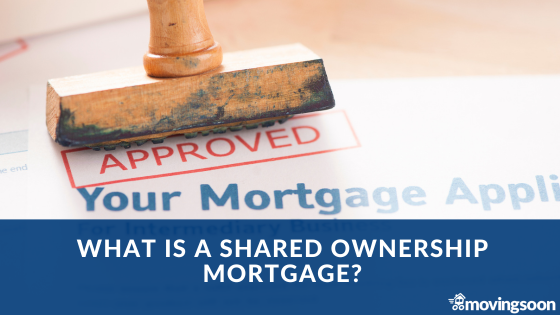Shared ownership mortgages, how do they differ? If you have been considering buying a shared ownership home, you probably have a good understanding of how the scheme works by now. But do you know where to start when it comes to getting a shared ownership mortgage?
Committed to providing clear communication when it comes to social and affordable housing. We have outlined some important information to help you.
By the end of this article, you should have an understanding of how a shared ownership mortgage differs from a standard mortgage. Overall, our aim is to guide you through mortgages and what you need to know to buy your first home.
Shared ownership mortgage data
According to the Council of Mortgage Lenders, the total amount of shared ownership mortgages in the UK was £1.6 billion in 2022. Compared to the previous year it is a 10% increase. A number of factors are driving the surge in shared ownership mortgages and the initiatives by the government to help individuals get onto the housing ladder.
Shared Ownership Mortgage Vs A Standard Mortgage, What Is The Difference?
The first and main difference between shared ownership mortgages and standard mortgages is that the mortgage amount is based only against the share of the property you are buying. Subsequently, this means that your deposit will be much less.
For example, if the property value was £150,000 and you are buying a 50% share at £75,000, the minimum deposit would be 5%, so £3,750. Whereas if you were buying a property outright on a standard purchase at £150,000 your 5% deposit would be £7,500!
Who can apply for a shared ownership mortgage?
Typically they are targeted at first time buyers. That’s not to say it is only first time buyers who can apply. They are also useful for those who have suffered a relationship breakdown and are looking to get their own affordable home.
Also they can be used by people who previously owned a home, but sold it some time ago and are now looking to get back on the property ladder. Likewise, they can also be used by downsizers who are looking to part buy part rent a retirement shared ownership home.
Recent changes to how shared ownership works
Up until April 2021 you had to buy a minimum of 25% share. That was changed so you can now start at 10% minimum share.
Likewise if you are looking to buy a bigger share of the property (called staircasing) you can now go up in 1% increments. For example, if you owned a 10% share you can staircase to 11% now. It used to be at least a 5% minimum, but this would depend on the housing provider.
Mortgage terms and jargon
Loan to Value (LTV)
The difference between the value of the property (or share for Shared Ownership) and the mortgage amount expressed as a percentage. If you borrowed £95,000 against a £100,000 share value, this would be 95% LTV. If a lender offered a 90% LTV mortgage product, this means you would need a 10% deposit.
Early Repayment Charge (ERC)
If you take a special deal such as a two year fixed rate, it’s likely you will have to pay a penalty if you leave the mortgage within the special deal period. For example if you leave early.
Redemption penalty
This is basically the same as above, a penalty you would pay if you leave the mortgage within a given period. This time period will be shown in both your mortgage quote (ESIS) and your mortgage offer.
ESIS document
European Standardised Information Sheet, or in our words ‘Your Mortgage Quote’ Armed with this you will be able to compare different mortgages you have been offered.
Mortgage Offer
Once your application has been submitted to a lender, the lender will underwrite your mortgage. The final outcome will be the Mortgage Offer. Effectively the lender saying to you ‘We will lend you the money’ and ultimately the terms you will be bound by.
Decision in Principle (DIP)
Also known as AIP (agreement in principle) or Mortgage Promise. This is the lender saying to you ‘We will lend you the money, subject to underwriting’.
Interest Rates
When it comes to mortgage interest you will hear the terms ‘fixed rate’, ‘tracker’ or ‘SVR’. These will apply to the way that interest is calculated on the amount that you have borrowed.
Fixed Rate
Your payments won’t change for an agreed period, for example two or five years. If you fix for longer than two years, you’ll usually pay a premium for this.
Tracker
A tracker mortgage is where the interest rate will go up or down depending on the ‘base rate’ (this is the rate of interest the Bank of England set). So if the Bank of England increases the base rate from 0.5% to 1%, your interest payments would increase too. This means that the monthly amount you pay to the bank would be more.
Standard Variable Rate (SVR)
Just like the tracker this rate type is also variable, it can change month to month. The SVR is the lenders own rate, set by them and adjusted by them when they see fit dependent on market conditions. It’s unusual to take the SVR rate on a brand new mortgage. Usually you would drop onto this rate after your fixed rate ends.
Product Transfer Rate
When your fixed or Tracker rate ends, the sensible thing to do is look for a new rate. Either remortgage to another lender or your existing lender will offer new special deals. If it’s a new rate with your existing lender, this is the ‘Product Transfer’.
Always double check if there are any early repayment penalties or restrictions on your mortgage before you decide to switch mortgage providers. This is because if you remortgage to secure a lower interest rate, you can be charged by your current mortgage provider for paying the mortgage back early.
Don’t forget Stamp Duty benefits for First Time Buyers
In addition to the low deposit amount to buy a shared ownership home, first time buyers also receive further benefits. If you are a first time buyer then you will be exempt from paying any Stamp Duty Land Tax (SDLT).
Most shared ownership buyers will benefit from the SDLT exemption anyhow. It is only charged on transaction of £125,000 and over. With shared ownership, the amount is often lower because you are buying a share of a property.
Shared ownership mortgage or the house, which comes first?
So, now you have done your homework on shared ownership and whether it is right for you.
You understand mortgages a bit better than before and you are ready and eager to go buy your first house. But where do you start?
There is no hard and fast rule here. You can go and look for houses to get an idea of prices before you have tried to get your mortgage.
However, it can be preferable to go mortgage shopping first. You can be in a better position to put in an offer if you see a property you like. You can seek an ‘agreement in principle’ (AIP) from your mortgage provider to make you more attractive as a buyer.
As explained above, an agreement in AIP means that the bank has reviewed your personal information and would be happy to provide you a mortgage for an agreed amount.
However, you must be aware that this is not a mortgage offer. Agreements in principle are exactly that, ‘in principle’. To have your mortgage offer approved, you must first pass the banks financial history checks.
The bank must be satisfied that the property you are buying is worth what you are paying for it.
That said, having an AIP can enhance your position. You will have a reasonable idea that the banks would lend you the amount you need to buy your home.
What shared ownership mortgages are available?
A quick Google will show you that there are different providers of a shared ownership mortgages. This includes some of the main banks and building societies as well as specialist lenders.
You need to do a search of the market. We’ve teamed up with John Charcoal so you can compare shared ownership mortgages with them. They offer you whole of market mortgage advice. As an independent mortgage broker, they have over 40 years’ experience in finding the best mortgage rates for every type of buyer.
Now you know how a shared ownership mortgage work go and find your shared ownership home
If you’ve got some cash saved up to cover your deposit and any legal fees that you will entail, then it is time to go house hunting. Finding shared ownership properties can be more difficult than simply buying on the private market.
It can be difficult to separate the shared ownership properties on the usual property websites such as Rightmove and Zoopla as there is no dedicated search for them.
Some estate agents may advertise local schemes available. We specialise in listing affordable homes including shared ownership properties.
Once you find the property for you, the housing association will guide you through the process of buying the property. You will need to progress your mortgage application and appoint a solicitor.
Perseverance pays getting your shared ownership mortgage and home
Buying a property can be a long winded process and often not without its ups and downs. But there is nothing quite like settling into your new place. Knowing that it is yours and benefiting from all that time saving so hard to get the money together.
We hope this article is helpful and provides some clarity about mortgages and shared ownership. However, if you still have unanswered questions, you should be able to find the answer in our help section.
Please note: MovingSoon is not authorised to give financial advice. The information and opinions provided in these articles are not intended to be financial advice and should not be relied upon when making financial decisions. Please seek advice from a specialist mortgage provider.


